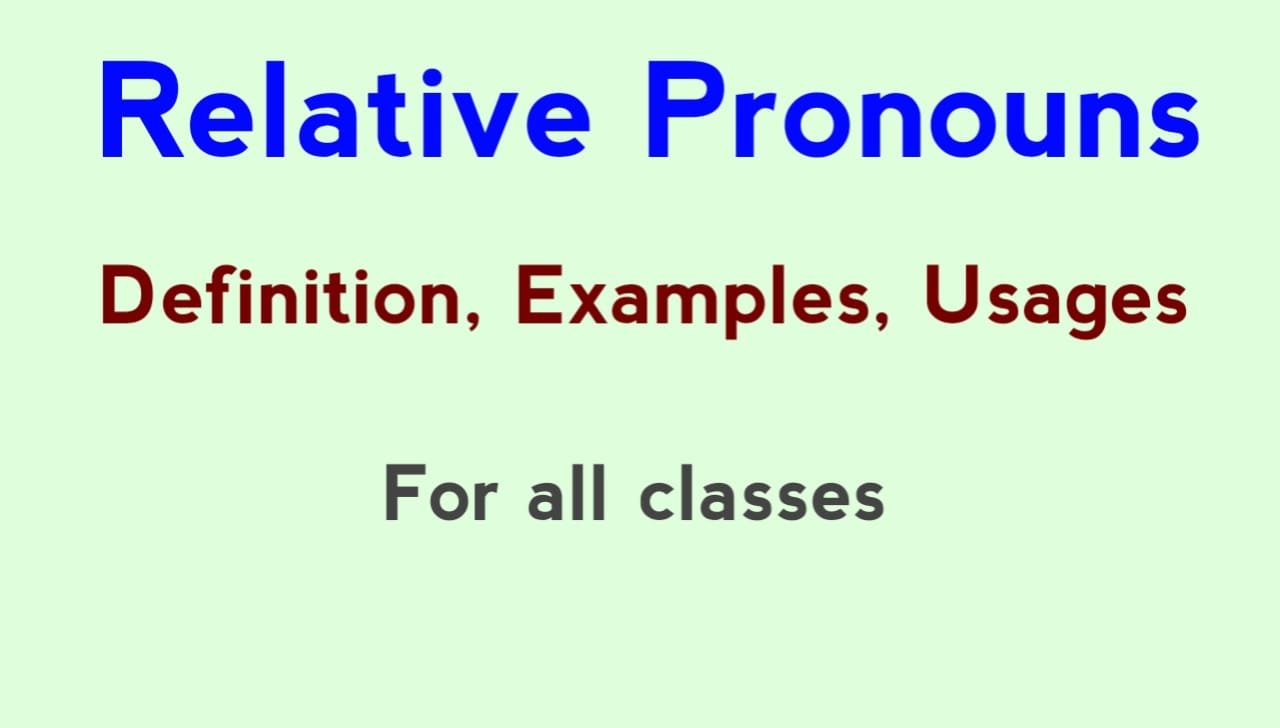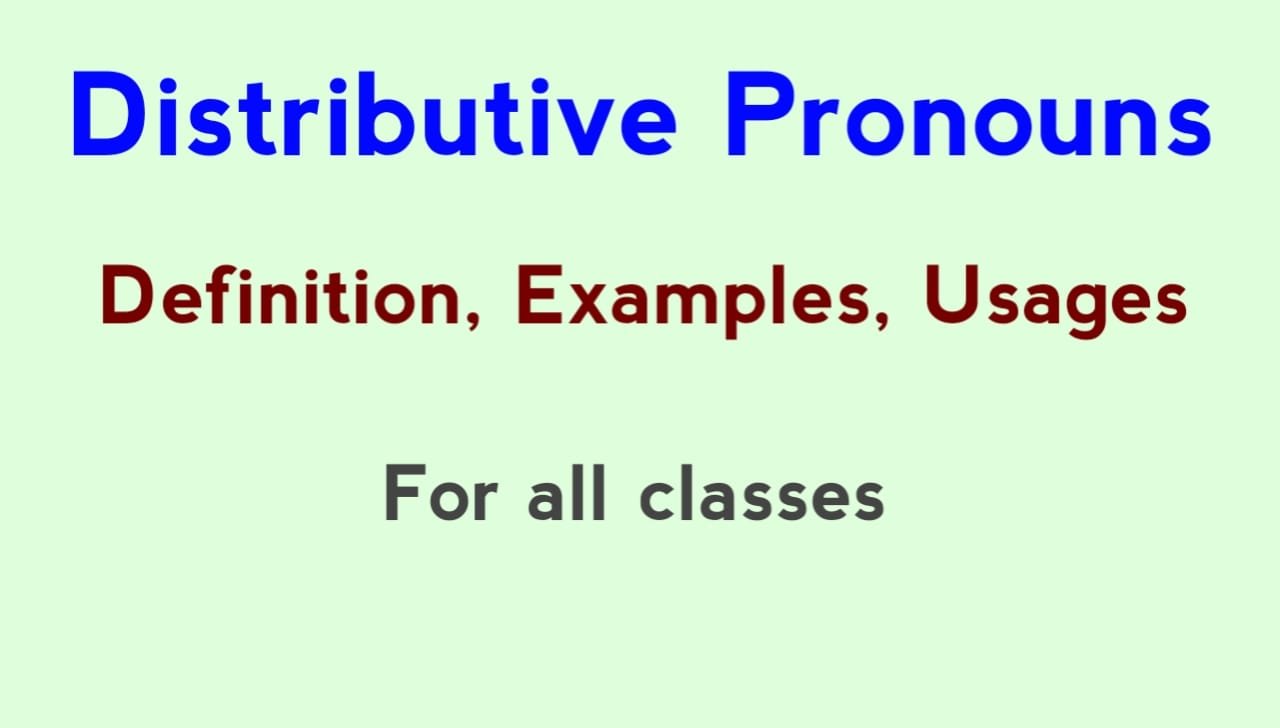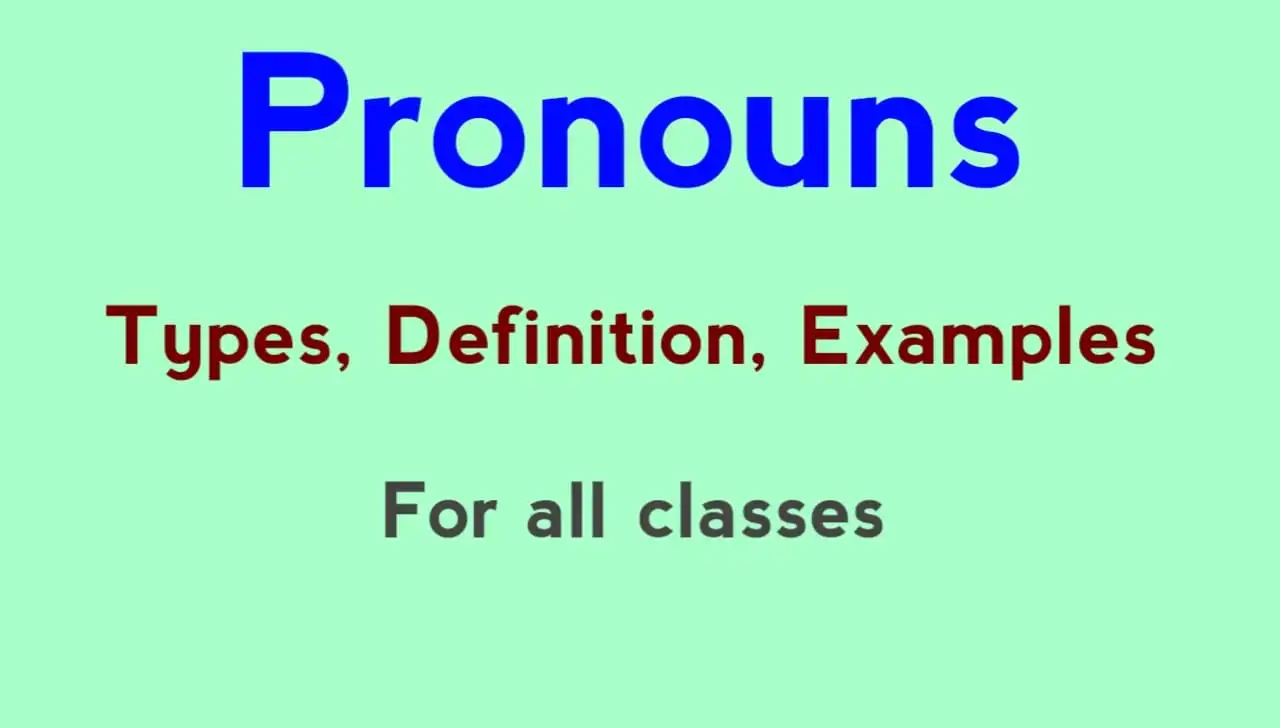“Who”, “which ”, “what ”, and “that ” are called Relative Pronouns. Relative Pronouns: Definition, Usage, Examples are discussed in the following.
Relative Pronouns:
“Who”, “which ”, “what ”, and “that ” are called Relative Pronouns. Relative pronoun also joins sentences like conjunction. So, it is also called a Conjunctive Pronoun. “But”, and “as” are also used as Relatives:
Examples:
(a) I know the man who came here.
(b) The book which you gave me is last.
The word to which the relative pronoun refers is called Antecedent. In the above sentences, man and book are antecedents of who and which.
People also read:
| Personal Pronoun | Interrogative Pronoun |
| Possessive Pronoun | Distributive Pronoun |
| Demonstrative Pronoun | Reflexive & Emphatic Pronoun |
| Relative Pronoun | Indefinite Pronoun |
Definition, Usage, Examples of Relative Pronouns
The Use of Who Which That What Whose.
(a) “ Who ” refers to only two persons: I know the man who came.
(b) “which” refers only to things like animals and babies:
(c) “That” refers to persons animals and things:
(d) “What” refers only to things:
(e)
| case | Singular and Plural | Singular and Plural |
| Masculine and Feminine | Neuter | |
| Nominative | Who | Which |
| Possessive | Whom | Which |
| Objective | Whose | Whose or of which |
The most common form of the Genitive Neuter is of which but whose is often used in poetry and sometimes in prose.
The masculine and feminine forms are used for persons only. The neuter forms are used for inanimate things and for all kinds of animals except persons (men and women).
(f) The use of who ( nominative) and whom (objective) are very often confused. As,
(1)The man who ( not whom) came here was my uncle.
(2)These are the boys whom (not who )I saw there.
(3)Who (not whom) do you think has done it?
(4)He is a person whom ( not who ) you can trust well.
The Use of Compound Relative Whoever Whatever Whichever.
(1)Whoever( anybody who) comes is welcome.
(2)He got whatever(anything that) he wanted.
(3)Take whichever(ant which) you please.
Restrictive and Continuative Usage
(a) who and which have a restrictive force when they limit or define the meaning of the antecedent:
- This is the boy who did it.
- This is the book which I bought.
(b) who and which have sometimes a continuative force and are used only to make some additional statement about the antecedent. They may then be replaced by a conjunction and a pronoun:
- You must obey your parents which (and this) will win the love of others.
- I saw your father who (and he) recognized me.
When the Relative Pronoun is used in the restrictive sense no comma (, ) is generally placed before it. But when it is used in the continuative sense it generally takes a comma (, ) before it.
(c) Besides the restrictive and continuative there are two more senses of who and which one implies a cause and other a purpose.
- Mr Roy who ( because he ) had been found guilty was fined. -Cause
- I sell send my brother who (that he may ) will do my work.-Purpose
In the above sentences, the relative clauses are neither restrictive nor continuative as they imply a cause of something already done and the purpose for which something is going to be done.
Usage of That, who, which
(d) That is always used in a restrictive sense, and it can be used instead of “who” and “which” but never for “ whose” :
- He is the best man that I ever met. (After objectives in the superlative degree)
- He is the only boy that did it. (After “some”, “any”, “all”, “only”, “one” etc that require a defining clause after them.)
- Who is the boy that did it? (After interrogatives who and what)
(e) Relative Pronouns agree on number gender and person with their antecedents, and it should be placed as near as possible to their antecedents to avoid ambiguity :
- This is the lady that lost her ring.
- I who am your master say so.
- It is useless to me who am healed.
(f) The Relative Pronoun is often omitted when it is the object of a verb or of a preposition :
- He is the man (whom) I saw.
- The book (which or that) I bought his last.
- I know the day (on which) he came.
(g) A noun or pronoun in the Possessive Case should not be used as the antecedent to a relative pronoun :
- I went to the man’s house who is my friend. ( Incorrect)
- I went to the house of the man who is my friend. ( Correct)
(h) “The same” is also followed by that:
- This is the same book that I lost.
Where the verb is expressed after “the same”, we may use both “as” and “that”:
- That is the same book (as or that) I lost.
But when the verb is understood we always use “as”:
- There is the same book as mine.
Check also:
Use of BUT and AS
(a) “As” is a relative pronoun when it comes after “ the same”,”such”,“ as much”, “as many” and is applied to both persons and things :
- This is the same move as that.
- Only such boys as have passed need apply.
- I gave him as much as he required.
(b) But “ as ” it’s not always a Relative Pronoun whenever it comes after another “ as ” :
- Come as soon as you can.
- I shall work as hard as possible.
- The second “ as ” is a conjunctive adverb.
(c) “As” is sometimes used independently as a relative pronoun for an unexpected antecedent to be gathered from the main sentence :
- This is true as ( a thing which) I said before.
(d) “But” is used as a Relative Pronoun when it means that not. As it has a negative sense and is used after a negative word, it is sometimes called a negative relative:
- There is no man but (who not) wishes to be happy.







